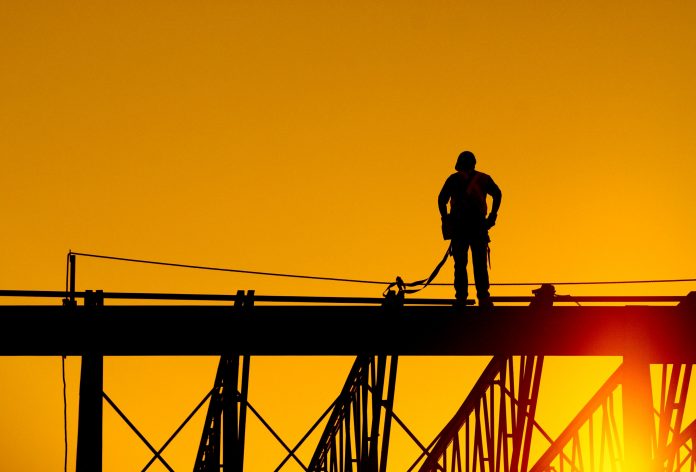Experts warn that we’re seeing a ‘burnout build-up’ in the UK’s workforce, as reports show that nearly half of construction workers have suffered from excessive workplace stress over the past year, leading one in 10 employees to leave their jobs
Experts have warned of risks to manual labour and service industries already hit by worker shortages, which are likely to grow in the new year. The last three months have seen a 200% spike in searches for ‘signs of burnout’, according to Google search data.
Annual data also shows a 28% increase in searches for ‘occupational burnout’ over the last 12 months – when compared to the previous year.
HR and leadership teams have been urged to address the growing issue of workplace stress, or risk losing employees, as we approach mid-winter and January, where mental health concerns often surge.
According to reports from the Confederation of British Industry, which represents 190,000 businesses, staff shortages in manual labour and service industries could last for two years.
Excessive workplace stress is a major predictor of burnout and other mental health impacts.
A recent mental health and employee stress study conducted by Vape Club surveyed employees from over 500 companies and found that almost half of them experienced excessive workplace stress in the past year.
Some of the prominent impacts described were:
- An inability to sleep.
- Physical health impacts.
- Withdrawal from social interactions and relationships.
When employees were asked about the support received from their workplace, 1 in 8 employees felt they didn’t receive the required support.
Impacts and implications of employee burnout
Staff-level employees were found to be most likely to experience excessive stress in the workplace, with 67% having suffered over the last year. This compares to 61% of employees in management roles, and 49% of company owners or directors.
However, those in management positions were found to be most likely to suffer from other mental health issues caused by work, such as anxiety or fatigue. One in five have experienced these problems over the last year, due to increased pressure placed on middle-management personnel.
Indirectly, workplace stress also leads to other health issues. According to recently released PHE data, employees working in manual labour-related industries were found to be over 2.5 times more likely to smoke. In the engineering and manufacturing sector, one in five (21%) ex-smokers have relapsed to smoking over the last year.
‘Evaluating ways to support employees is vital’
Dave Capper, CEO at Westfield Health, said: “This shift in looking after wellbeing hasn’t just surfaced due to added workload; the pandemic has made many people change their priorities.
“Meeting these needs is important for personal wellbeing. We all have our own values and goals and if our workplace does not help us meet them, it negatively impacts our happiness, sense of achievement and mental health, all of which can lead to employees leaving or feeling burnt out.
“Businesses now need to take some time to reflect and see whether they are offering their employees what they want and giving them what they deserve. These employees are the ones that have kept companies going throughout tough times, so evaluating ways to support them is vital.”
‘Materials shortages mean construction workers are forced to work longer and harder’
Michael Christou, director at building, electrical, and gas service company Just A Phase Ltd, commented: “One of the biggest strains on construction workers right now is deadlines, we have seen a large increase in materials shortages which means construction workers are forced to work longer and harder to catch up on the time lost due to these shortages.
“Most of these shortages are due to Brexit with shipping delays being a major issue and has caused already squeezed project deadlines to be even more unrealistic and very unmanageable in many cases.
“Also, Covid restrictions have played a part in the delays and shortages of delivery of materials. All of this funnels down to the construction workers on the ground as they are pushed harder and expected to do more.
It is key to ensure that construction workers are not pushed into burnout… I have seen in some cases construction workers nearly in tears with the amount of pressure they can be put under.”

















